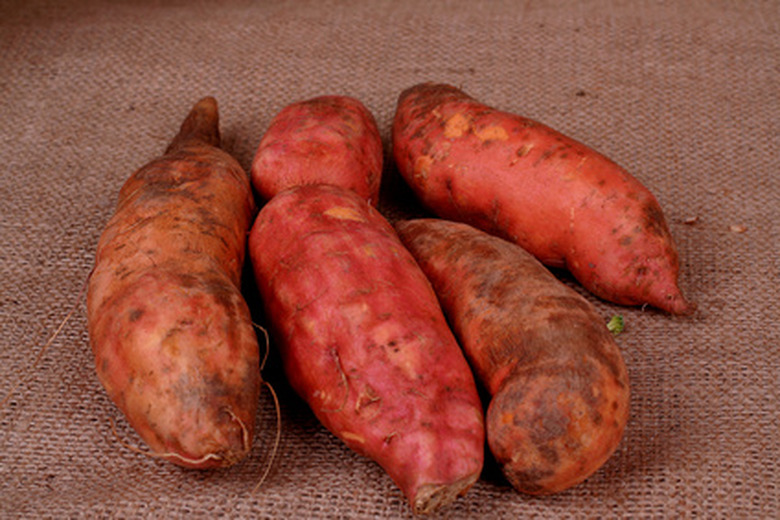The Best Vegetables To Grow In Hawaii
Hawaii's year-round growing season makes it an ideal place to grow vegetables. But paradise is not without perils for many crop plants. Insect pests and pathogens can decimate plants not adapted to the tropics. The key to a successful vegetable garden in Hawaii lies in selecting disease-resistant plants, which are well-adapted to tropical growing conditions.
Sweet Potato/Yam
The sweet potato is a traditional Polynesian crop that does well in even the driest parts of Hawaii. They are much more resistant to fungal pathogens and insect pests than are white potatoes. They require full sun, moderate water and loose, well drained soil, free of large stones. Some varieties can even make attractive ground covers for low use areas. Good varieties for Hawaii include Waimanalo Red, Kaneohe Red and Onokeo.
- Hawaii's year-round growing season makes it an ideal place to grow vegetables.
- Insect pests and pathogens can decimate plants not adapted to the tropics.
The yam is another Polynesian introduction, which has the same general cultural requirements as the sweet potato. They are drought and pest resistant, requiring full sun and well-drained soil. The variety known as Kona-B is a very adaptable, high-yielding yam. Other good varieties include Onolena and Iliula.
Kalo
Kalo, also called taro, was the most important crop to the ancient Polynesians, and is still widely grown in Hawaii today. The large tuberous kalo root is eaten like potatoes or used to make poi, a nutritious, starchy paste essential to any traditional Hawaiian feast. The large, heart-shaped leaves, called lu'au, are steamed and eaten as a mineral rich green. Some varieties of kalo, known as dry land or upland kalo, can be planted in ordinary garden beds. Dry land kalo requires full sun, rich, moist soil and a thick layer of mulch for best production. Kalo's bright green to red colored leaves are also quite attractive in the landscape. Lehua maoli is an excellent upland poi kalo, while Bun Long is a good choice for table use and for taro chips.
- The yam is another Polynesian introduction, which has the same general cultural requirements as the sweet potato.
- Some varieties of kalo, known as dry land or upland kalo, can be planted in ordinary garden beds.
Wet kalo is planted in shallow pools of cool, circulating water in full sun. While large scale production is seldom practical for the home gardener, a few kalo plants nodding on the margins of a backyard pond can make a lovely and delicious connection to old Hawaii. Local cultivars include Mo'i and Ha'akea.
Eggplant
Eggplant is of the most successful temperate climate vegetables grown in Hawaiian home gardens. The best producers are the long Japanese types, which mature quickly and show good resistance to insect pests. Eggplant requires moderately fertile, well-drained soil, full to partial sun and moderate water. Waimanalo Long is a good long type cultivar. Choose Black Egg, or Money Maker for small pickling types.
- Wet kalo is planted in shallow pools of cool, circulating water in full sun.
Tomatoes
In Hawaii, tomatoes are highly susceptible to fungal pathogens, root knot nematodes and fruit flies. They require rich, extremely well-drained soil, full sun and constant moisture. Cherry and Roma type tomatoes are generally more resistant to fruit fly attack because they mature quickly and have thicker skins. Certain hybrids developed by the University of Hawaii have resistance to common diseases and root knot nematodes. Good choices include Anahu, Healani, Kewalo, and Puunui.
